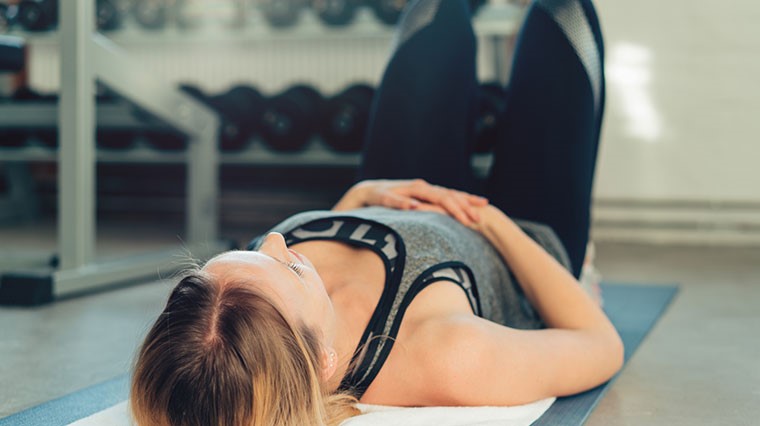Are You Breathing Right? How To Breathe Better On Your Runs

Out… *huff*… of…*puff*... breath? If you’ve ever felt like your legs could go another 5K but your lungs can’t keep up, don’t worry, we’ve totally been there.
Breathing comes naturally - in fact, you’re doing it right now (at least we hope so!). However, making a conscious effort to be aware of how you’re breathing while running may improve your efficiency and by ‘training’ your lungs, proper breathing technique will become second nature.
Not only will this prevent breathlessness and nasty side stitches (ouch!), it’ll avoid fatigue by supplying your body with the oxygen needed to convert nutrients into energy for endurance and tempo runs.
Condition Your Lungs
Like a muscle, your lungs need the opportunity to grow stronger and adapt to the increased pressures you place on them.
As a beginner runner, aim for a conversational pace - you should be able to speak without feeling out of breath between words, then build up towards greater intensity and distances as you become more comfortable with your breathing so you don't plateau.
Alongside running, follow a balanced cross-training routine that includes cardiovascular workouts to increase the production of red blood cells and therefore your body’s ability to stay oxygenated. Regular sprint interval training, swimming, rowing, cycling and aerobics boost the efficiency of your lungs to transport oxygen (so you can blow up party balloons like a pro!).
Breathe With Your Mouth

Why? Simply put, your mouth provides a larger opening/pathway to intake oxygen and expel carbon dioxide, and the more oxygen to fuel your exercising muscles, the more endurance and stamina you have to work with.
Relying solely on nose breathing restricts your oxygen uptake, forcing you to slow down the pace - but we’ve got nothing against your nose (it helps filter and warm air), so a combination of both nose and mouth breathing is A-okay, after all, oxygen is free!
‘Dead fish’ should be your default running expression (flattering huh?). By keeping your mouth slightly open as you run, your face remains relaxed, free of tension and air can flow freely - just watch out for flies.
What Type Of Breather Are You?
Are you a deep belly breather or shallow chest breather? More common than not, runners are chest breathers - but this isn’t a good thing (doh!).
Chest breathing draws rapid, shallow breaths into the top lobes of your lungs using your intercostal muscles (the muscles between your ribs) and neglects to activate your abdominal area, meaning the lungs aren’t used to their full capacity.
On the other hand, deep belly or diaphragmatic breathing lets you to intake a larger amount of oxygen per breath by contracting your diaphragm and moving it down, encouraging your lungs to inflate fully and relaxing your diaphragm to empty your lungs when exhaling.
This improves oxygen delivery to your bloodstream and allows you to efficiently expel carbon dioxide (leaving more space in your lungs for oxygen on your next breath).
Practice Diaphragmatic Breathing

Practice diaphragmatic breathing by lying flat on your back, knees bent pointed upward, with your hands or book positioned on your stomach.
Breathe in deeply and mindfully, being aware of your hands/book rising and falling in sync with your stomach as you inhale and exhale. Concentrate on expanding your belly on inhales and fully expelling the air from your lungs in each exhale.
Do it while sitting (reading a book, having a Netflix marathon or licking up a choc top) and standing, gradually working your way up to a short easy walk, brisk walk, jog and run once you’re comfortable with the technique.
Be conscious of having proper running posture to aid in breathing and consider taking up yoga or Pilates, which focuses on diaphragmatic breathing that can be transferred into your running.
Rhythmic Breathing
Breathing to the beat of your steps (or snazzy tunes) may keep your oxygen supply steady and help maintain your running pace, but don’t get your laces in a twist regarding ‘perfect’ rhythmic breathing.
3:3 for low intensity runs (inhale over 3 steps, exhale over 3 steps), 2:2 for medium intensity (inhale over 2 steps, exhale over 2 steps) and 1:2 (inhale over 1 step, exhale over 2 steps) or 2:1 (inhale over 2 steps, exhale over 1 step) for final sprints to the finish line is a general guideline - but don’t feel like you have to count each breath.
You can tune your body into these breathing patterns to test which works for you to keep you in the groove of your run (although this can be tricky), but it’s okay to allow your body to find its own natural pattern, dictated by your running effort.
Happy running!
